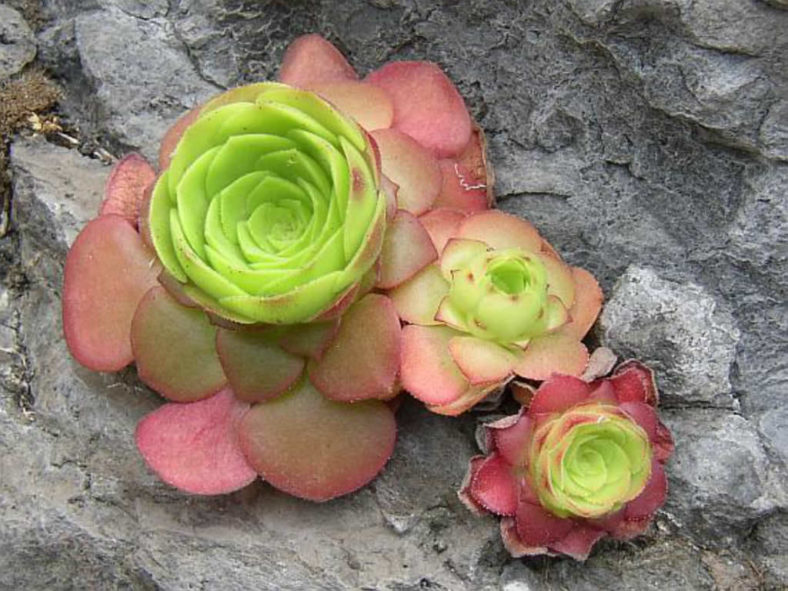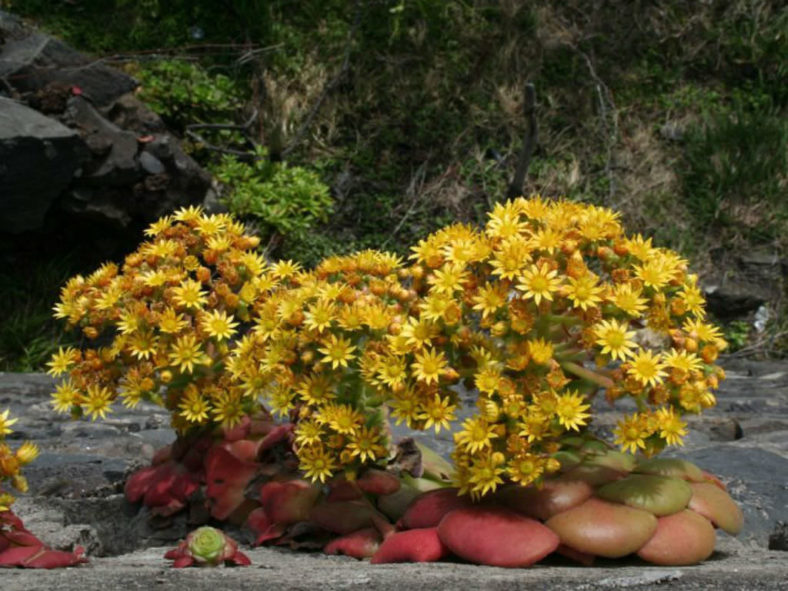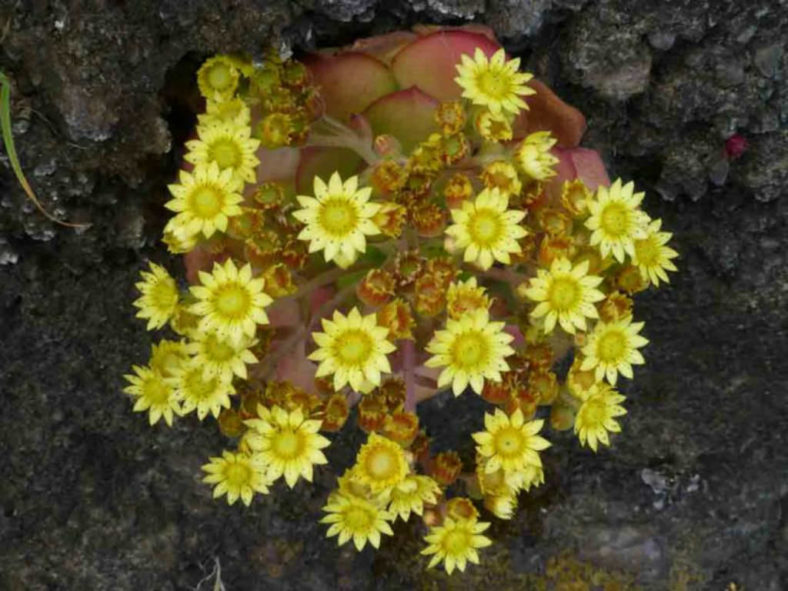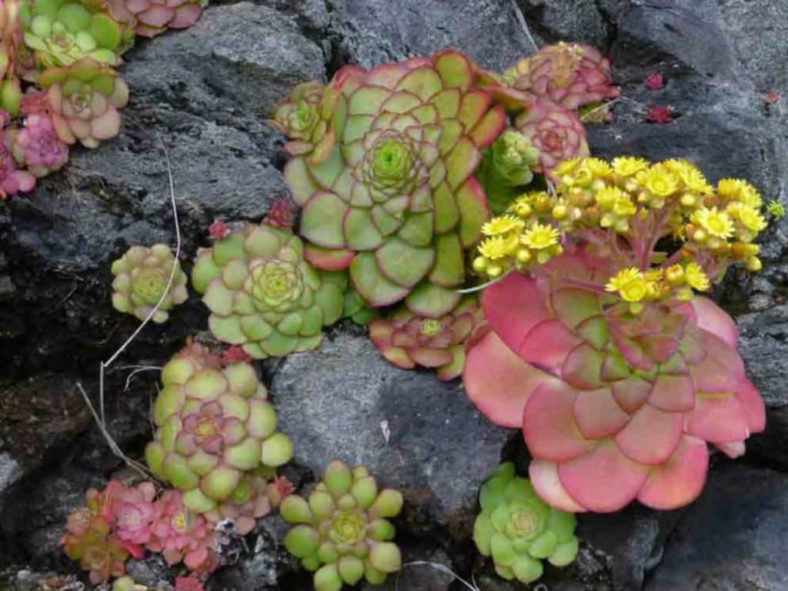Scientific Name
Aeonium glandulosum (Aiton) Webb & Berthel.
Common Name(s)
Disc Houseleek, Saucer Plant
Synonym(s)
Aeonium meyerheimii, Sempervivum glandulosum, Sempervivum meyerheimii, Sempervivum patina
Scientific Classification
Family: Crassulaceae
Subfamily: Sempervivoideae
Tribe: Aeonieae
Genus: Aeonium
Etymology
The specific epithet "glandulosum" (pronounced "glan-doo-LOW-sum") means "glandulous" and refers to the inflorescences of this species, which are covered in glandular hairs.
Origin
Aeonium glandulosum is endemic to the Portuguese archipelago of Madeira (the islands of Madeira, Porto Santo, and Desertas). It grows on sea cliffs on northern shores or rocky peaks from sea level up to 4,920 feet (1,500 m).
Description
Aeonium glandulosum is a biennial to short-lived perennial succulent with a stout, very short stem and fleshy leaves arranged in a dense, cup-shaped rosette. The rosette usually grows solitary or occasionally produces a few offsets, reaching a diameter of 16 inches (40 cm). The leaves are obovate or oblanceolate with margins lined with bead-shaped cilia. They can measure up to 4.4 inches (11 cm) in length and 3.2 inches (8 cm) in width.
The flowers are daisy-like, 8- to 13-merous, pale yellow, and appear in a loose inflorescence emerging from the center of the rosette in summer. The inflorescence can grow up to 10 inches (25 cm) long and can reach a diameter of 16 inches (40 cm).

How to Grow and Care for Aeonium glandulosum
Hardiness: USDA hardiness zones 9b to 11b: from 25°F (3.9°C) to 50°F (10°C).
Aeoniums do not like hot or dry weather. Therefore, they may go dormant in summer and do not require any water except in arid conditions. In extreme heat, their leaves will curl to prevent excessive water loss. Growing them in moist shade will keep them growing, but their true growth season is winter to spring, when temperatures are cool —65°F to 75°F (18°C to 24°C) —and damp. In the winter, water whenever the soil has dried out. Test by poking your finger down into the soil an inch or 2 (2.5 to 5 cm). Too much moisture or leaving them in wet soil will cause root rot.
A sandy loam or a regular potting mix is better than a cacti-and-succulents mix, since Aeoniums need some moisture. If you grow them in containers, repot them with fresh potting soil every 2 to 3 years.
Feed during the growing season with a half-strength balanced fertilizer every month or so. Do not feed while dormant.
Learn more at How to Grow and Care for Aeonium.
Links
- Back to genus Aeonium
- Succupedia: Browse succulents by Scientific Name, Common Name, Genus, Family, USDA Hardiness Zone, Origin, or cacti by Genus
Photo Gallery
Click on a photo to see a larger version.


